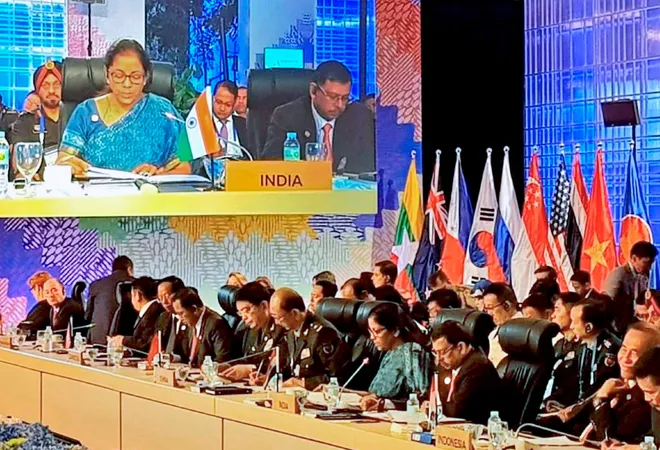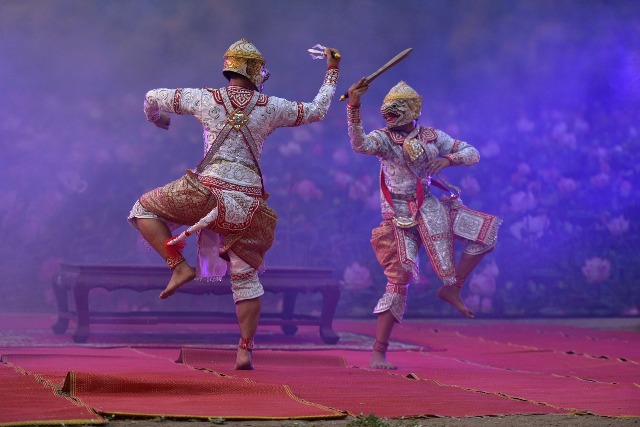
In an unprecedented move, Prime Minister Modi has invited not just one but 10 important global leaders and all are from our neighbourhood for the Republic Day parade 2018. On the eve of India’s Republic Day, 25 January, the India-ASEAN commemorative summit marking 25 years of bilateral relations will be held in New Delhi. The idea is of course to give weight to India’s Act East Policy and also to emphasise solving regional problems like terrorism but underlying this celebration is Modi’s big effort to consolidate India’s position as an investment destination vis-à-vis China which is undoubtedly the biggest player in the ASEAN region.
With the rise in China’s labour costs over the years, it is increasingly outsourcing its production to ASEAN members like Cambodia, Laos and neighbouring Vietnam which are its hot favourites. India has to compete with ASEAN countries in the global markets and even the bilateral trade between India and ASEAN, despite the Free Trade Treaty of nine years, is not in India’s favour. India had a trade deficit of $9.56 billion with ASEAN in 2016-17. We are clearly not exporting enough to the region and importing much more. In FDI inflows, however, ASEAN countries have been investing more in India at $6.97 billion than India’s investment in ASEAN which was only $1.2 billion in 2015.
With the rise in China’s labour costs over the years, it is increasingly outsourcing its production to ASEAN members like Cambodia, Laos and neighbouring Vietnam which are its hot favourites. India has to compete with ASEAN countries in the global markets and even the bilateral trade between India and ASEAN, despite the Free Trade Treaty of nine years, is not in India’s favour.
Many reasons stand in the way of better trade and investment flows and lack of good connectivity is one of them. At the New Delhi summit, India is likely to press forward the need for cooperation in building infrastructure to overcome this lacuna. Various non-tariff barriers in ASEAN are also to be blamed. Modi wants to showcase India’s achievements at this forthcoming summit and point to the rosy prospects that India presents as a high growth, vibrant economy. The leaders will for sure return home impressed and may be take the much needed action on the trade and investment fronts for enhancing ties.
ASEAN comprises of an assorted group of countries (Myanmar, Thailand, Vietnam, Indonesia, Malaysia, Philippines, Singapore, Cambodia, Laos and Brunei) with whom India has had trade and cultural relations from ancient times. Most importantly it is this cultural link that the BJP government is seeking to enrich and exploit further. Otherwise why should Ramayana be such an important part of this event?
It is true that India’s link with the Southeast Asian region has been deep and in many of the members of ASEAN like Cambodia, Thailand, Indonesia and Burma, there are many symbolic remnants of India’s influence on their art and culture. Through the centuries, India has been a source of inspiration for art and architecture in the ASEAN region. In the temples of Angkor Wat, Pagan, Borobudur and Prambanan, Indian art and architectural forms are evident. Surprisingly, some of these monuments surpass the grandeur of Indian temples from the same period in Indian history because of their huge scale and extensive stone bas relief carvings.
 The Ramayana being staged in Thailand. Almost every country in the region accepted the Ramayana because it is easy to retell and understand its stories.
The Ramayana being staged in Thailand. Almost every country in the region accepted the Ramayana because it is easy to retell and understand its stories.
Also due to the contact with Indian civilisation, the region created many literary works based on the Ramayana, but each culture in Southeast Asia added something of its own. Almost every country accepted the Ramayana because it is easy to retell and understand its stories. But the recipient countries also modified Ramayana to apply to their contemporary culture. Similarly the epic of Mahabharata was often edited and retold to big audiences, gaining immense popularity. The artistes who popularised these were called dalangs and they successfully adapted the original epics by contextualising and localising them. This was the beginning of the formation of new texts like Seri Rama (Malaysian adaptation of Ramayana) and Ramker (Ramayana Khmer) in Cambodia. These are regarded as some of the highest literary works of Southeast Asia.
Trade between India and Southeast Asia flourished and followed two routes, one through land via Bengal, Assam, Manipur to Burma to reach other parts of the region and the other was the maritime route from Coromandel coast via Malacca strait to reach the Malay Peninsula and beyond. Merchants were accompanied by Brahmin priests and spread Hindu civilisation to different parts of Southeast Asia. Buddhism also came from India in 3rd century BCE when Buddhist monks were sent by king Ashok. Many Indian artisans helped in building great temples and monuments during Indonesia’s Srivijaya maritime empire from the seventh to thirteenth centuries. Many of the motifs on the walls of Borobudur and Angkor Wat resemble carvings of Konarak and other medieval temples of eastern India. The kings of the region wore Indian made silk brocades and donned Indian jewels and the common folks craved for printed as well as woven textiles from India.
Due to the contact with Indian civilisation, the region created many literary works based on the Ramayana, but each culture in Southeast Asia added something of its own.
Sanskrit scripts were the first known form of writing that ever reached South East Asia. Alphabets were adopted for local languages from it and the Burmese, Thai, Laos, Cambodian scripts were originally derived from the Indian prototype. Sanskrit terminology was used in all legal proceedings in the courts and only factual aspects were described in vernacular. Codes of law and public administration especially the concept of “God King” was adopted by many kings in Southeast Asia. This was modified with the advent of Buddhism.
The decline of India’s influence began around 13th century when conversions to Islam took place in countries like Malaysia and Indonesia, but within Indonesia, much of Bali still practices Hinduism. Even after several centuries, the impact of India’s culture can be felt today in customs, culture, and architectural designs of the region. For example, Muslim wedding ceremonies in Malaysia are based on Hindu rituals and attire and Indonesian Airlines is called Garuda, a vehicle of Hindu god Vishnu. A Mahabharata Monument depicting Krishna and Arjun riding a chariot pulled by 11 horses can be seen in a park in central Jakarta today despite the presence of radical Islam.
Thus Mr. Modi’s overtures are based on efforts to link the ASEAN with India’s cultural ties of the past in a unique way. He is going to emphasise the linkages through Buddhism also. If the ties are firmed up, India and ASEAN will become closer and therein lies the potential for increasing tourism, people to people contact, trade and investment which will make PM Modi’s endeavour unprecedented. The government will also carry forward its cultural and economic agendas simultaneously!
The views expressed above belong to the author(s). ORF research and analyses now available on Telegram! Click here to access our curated content — blogs, longforms and interviews.




 The Ramayana being staged in Thailand. Almost every country in the region accepted the Ramayana because it is easy to retell and understand its stories.
The Ramayana being staged in Thailand. Almost every country in the region accepted the Ramayana because it is easy to retell and understand its stories. PREV
PREV


